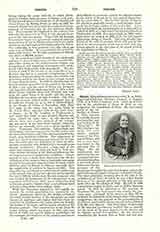

Sibour, MARIE-DOMINIQUE-AUGUSTE, b. at Saint-Paul-Trois-Chateaux (Drome, France), August 4, 1792; d. in Paris, January 3, 1857. After his ordination to the priesthood at Rome in 1818, he was assigned to the Archdiocese of Paris. He was named canon of the cathedral of Nimes in 1822, became favorably known as a preacher, and contributed to “L’Avenir”. In 1837, during a vacancy, he was chosen administrator of the Diocese of Nimes, and two years later was raised to the episcopal See of Digne. His administration was marked by his encouragement of ecclesiastical studies, a practical desire to increase the importance of the functions exercised by his cathedral chapter, and a faithful observance of canonical forms in ecclesiastical trials. The same principles actuated him in his rule of the Archdiocese of Paris, to which he was called largely because of his prompt adhesion to the new government after the Revolution of 1848. He held in 1849 a provincial council in Paris and in 1850 a diocesan synod. In 1853 he officiated at the marriage of Napoleon III, who had named him senator the previous year. Although in his answer to Pius IX he declared the definition of the Immaculate Conception inopportune, he was present at the promulgation of the Decree and shortly afterwards solemnly published it in his own diocese. The benevolent cooperation of the imperial government enabled him to provide for the needs of the poor churches in his diocese and to organize several new parishes. He also aimed at introducing the Roman Rite in Paris and was progressing favorably in this direction when he was killed by an interdicted priest named Verger.
N. A. WEBER

